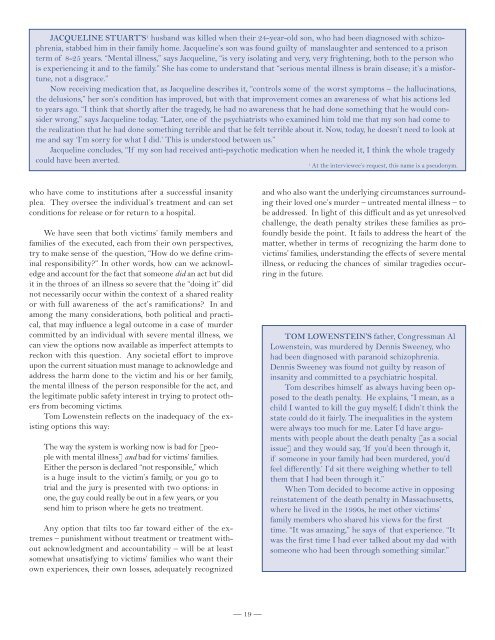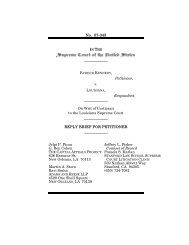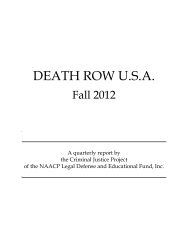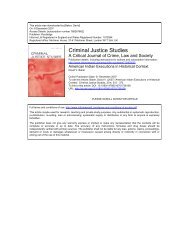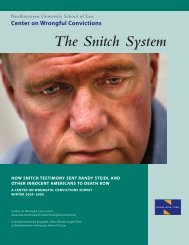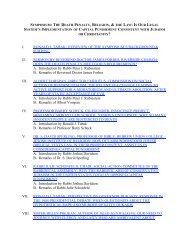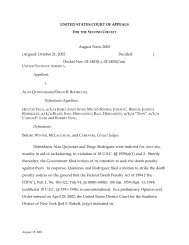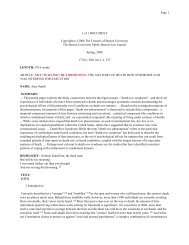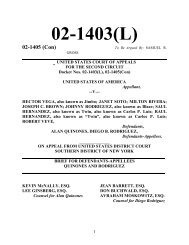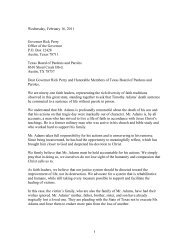Double Tragedies - Families for Human Rights
Double Tragedies - Families for Human Rights
Double Tragedies - Families for Human Rights
- No tags were found...
Create successful ePaper yourself
Turn your PDF publications into a flip-book with our unique Google optimized e-Paper software.
JACQUELINE STUART’S 1 husband was killed when their 24-year-old son, who had been diagnosed with schizophrenia,stabbed him in their family home. Jacqueline’s son was found guilty of manslaughter and sentenced to a prisonterm of 8-25 years. “Mental illness,” says Jacqueline, “is very isolating and very, very frightening, both to the person whois experiencing it and to the family.” She has come to understand that “serious mental illness is brain disease; it’s a mis<strong>for</strong>tune,not a disgrace.”Now receiving medication that, as Jacqueline describes it, “controls some of the worst symptoms – the hallucinations,the delusions,” her son’s condition has improved, but with that improvement comes an awareness of what his actions ledto years ago. “I think that shortly after the tragedy, he had no awareness that he had done something that he would considerwrong,” says Jacqueline today. “Later, one of the psychiatrists who examined him told me that my son had come tothe realization that he had done something terrible and that he felt terrible about it. Now, today, he doesn’t need to look atme and say ‘I’m sorry <strong>for</strong> what I did.’ This is understood between us.”Jacqueline concludes, “If my son had received anti-psychotic medication when he needed it, I think the whole tragedycould have been averted.1At the interviewee’s request, this name is a pseudonym.who have come to institutions after a successful insanityplea. They oversee the individual’s treatment and can setconditions <strong>for</strong> release or <strong>for</strong> return to a hospital.We have seen that both victims’ family members andfamilies of the executed, each from their own perspectives,try to make sense of the question, “How do we define criminalresponsibility?” In other words, how can we acknowledgeand account <strong>for</strong> the fact that someone did an act but didit in the throes of an illness so severe that the “doing it” didnot necessarily occur within the context of a shared realityor with full awareness of the act’s ramifications? In andamong the many considerations, both political and practical,that may influence a legal outcome in a case of murdercommitted by an individual with severe mental illness, wecan view the options now available as imperfect attempts toreckon with this question. Any societal ef<strong>for</strong>t to improveupon the current situation must manage to acknowledge andaddress the harm done to the victim and his or her family,the mental illness of the person responsible <strong>for</strong> the act, andthe legitimate public safety interest in trying to protect othersfrom becoming victims.Tom Lowenstein reflects on the inadequacy of the existingoptions this way:The way the system is working now is bad <strong>for</strong> [peoplewith mental illness] and bad <strong>for</strong> victims’ families.Either the person is declared “not responsible,” whichis a huge insult to the victim’s family, or you go totrial and the jury is presented with two options: inone, the guy could really be out in a few years, or yousend him to prison where he gets no treatment.Any option that tilts too far toward either of the extremes– punishment without treatment or treatment withoutacknowledgment and accountability – will be at leastsomewhat unsatisfying to victims’ families who want theirown experiences, their own losses, adequately recognizedand who also want the underlying circumstances surroundingtheir loved one’s murder – untreated mental illness – tobe addressed. In light of this difficult and as yet unresolvedchallenge, the death penalty strikes these families as profoundlybeside the point. It fails to address the heart of thematter, whether in terms of recognizing the harm done tovictims’ families, understanding the effects of severe mentalillness, or reducing the chances of similar tragedies occurringin the future.TOM LOWENSTEIN’S father, Congressman AlLowenstein, was murdered by Dennis Sweeney, whohad been diagnosed with paranoid schizophrenia.Dennis Sweeney was found not guilty by reason ofinsanity and committed to a psychiatric hospital.Tom describes himself as always having been opposedto the death penalty. He explains, “I mean, as achild I wanted to kill the guy myself; I didn’t think thestate could do it fairly. The inequalities in the systemwere always too much <strong>for</strong> me. Later I’d have argumentswith people about the death penalty [as a socialissue] and they would say, ‘If you’d been through it,if someone in your family had been murdered, you’dfeel differently.’ I’d sit there weighing whether to tellthem that I had been through it.”When Tom decided to become active in opposingreinstatement of the death penalty in Massachusetts,where he lived in the 1990s, he met other victims’family members who shared his views <strong>for</strong> the firsttime. “It was amazing,” he says of that experience. “Itwas the first time I had ever talked about my dad withsomeone who had been through something similar.”__ 19 __


